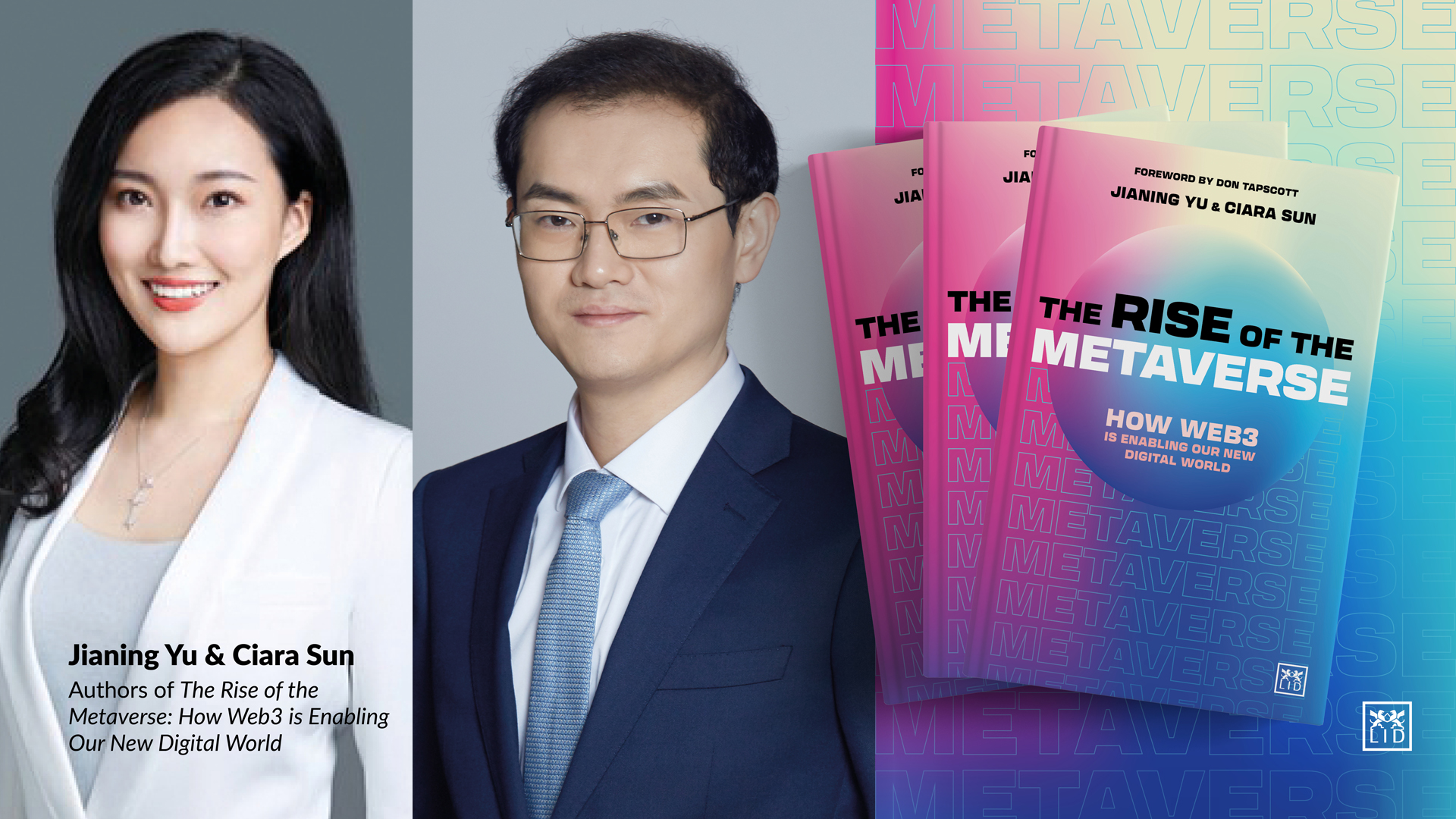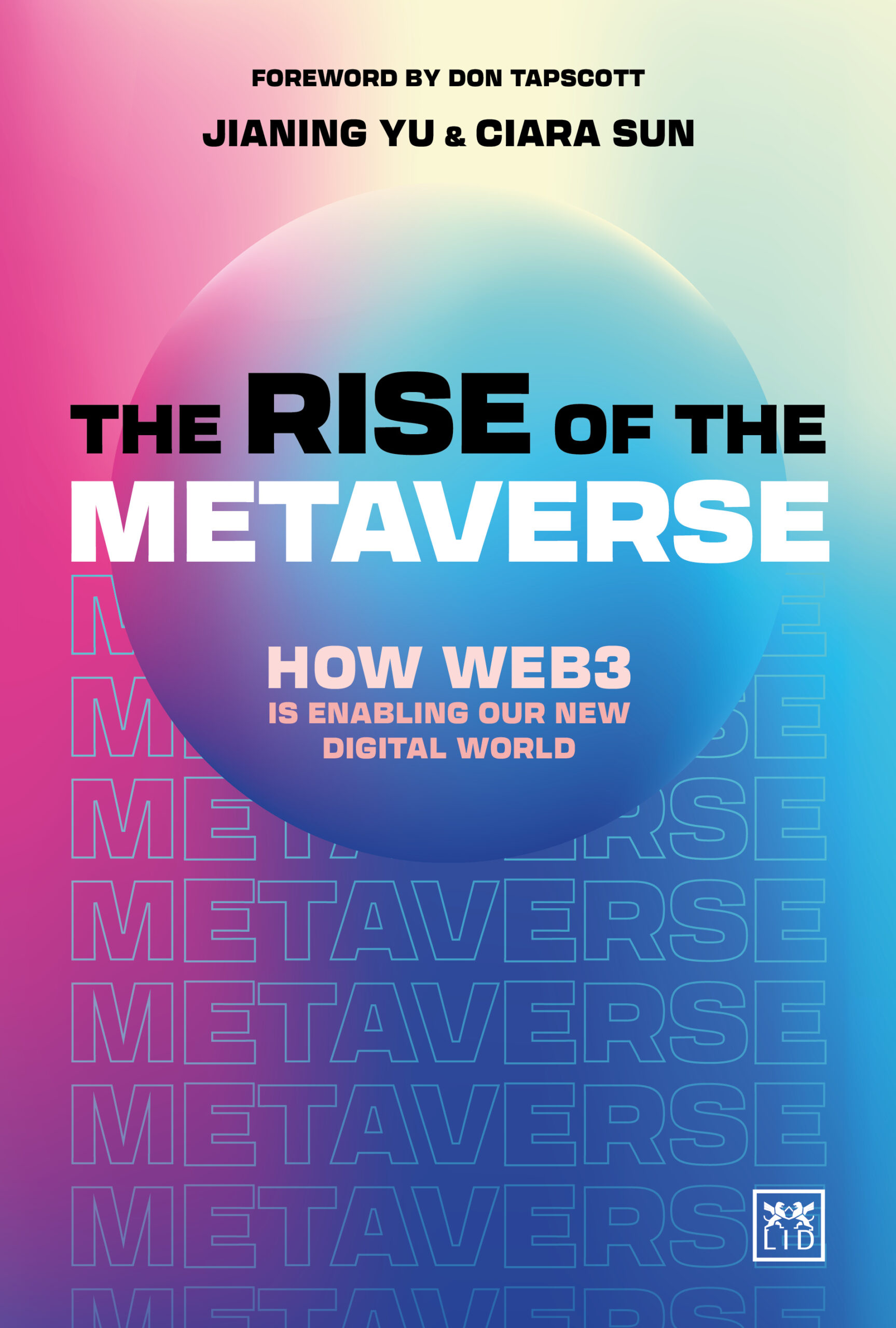|
What Digital IDs will we use in the Metaverse? with Jianing Yu and Ciara Sun
What Digital IDs will we use in the Metaverse? with Jianing Yu and Ciara Sun

By Guest Contributors Jianing Yu and Ciara Sun
Authors of The Rise of the Metaverse, Jianing Yu and Ciara Sun, share what type of digital identification we will use in the Web3 and how our data will be kept safe.
Each one of us needs a digital identity with universality, independence and privacy to complete our activities in the metaverse. This digital identity can bridge the identity, data, credit and asset system, record our social relationship, activity record, transaction history, digital contribution, property rights, knowledge and creativity and all other information in the metaverse, our work, life, entertainment, investment and transaction in the metaverse will be done based on it.
Review the development of digital identity, initially we generally use email, cell phone number or use the platform identity to register and login, but there are many problems and loopholes in these identity authentication methods. For example, when using mailboxes, email addresses can be created or replaced at will, which cannot correspond to the real identity, so some problems arise, such as fake users “get the best deal”, network personal attacks, abuse of network services, etc.
With the popularization of mobile terminals, cell phone numbers have become an important form of authentication in our digital world, and most applications use cell phone numbers as digital identity. However, if the phone is shut down with unpaid bills or is bought by others after cancellation, not only will a large number of Internet accounts be unable to log in, but also the private information on many platforms will be at risk of being exposed. A tiny cell phone number carries all our identity and data in the digital age, but the security of this authentication method of cell phone number and verification code is weak, users’ identity information data are concentrated on the platform, so it is easy for the problem of platform data leakage to emerge. Also, the management is too centralized, the administrator of the platform has the right to directly cancel the account and erase the data information, and if the administrator misuses the data, the consequences are also unimaginable.
In recent years, internet giants have started to offer identity verification services, such as the ability to log in to Twitter or Youtube using a Google account. This makes digital identities universal to a certain extent, eliminating the need for users to repeatedly register and authenticate with their real names, thus reducing the risk of personal information leakage. Users can also use WeChat to manage identity authorization at any time, view applications registered with that identity, and easily deauthorize certain applications.
Despite the fact that users have a degree of identity management, this is still a centralized approach to identity verification with the digital identity hosted by the internet giants. Platforms can erase a person’s digital identity by blocking their number at any time. However, if the base account is blocked or lost or stolen, it is more difficult to retrieve other account information. At the same time, a large amount of personal data is concentrated in the servers of the giants, which can easily lead to leakage or misuse problems. There are also usage barriers in different platforms due to companies’ cooperation, which makes it impossible to truly universalize digital identity. This is the biggest problem of “centralized” digital identity: the management and control of identity is not actually in our own hands.
What kind of digital identity do we need in the age of the metaverse?
As we see it, the metaverse era needs a more secure, trustworthy and universal distributed digital identity based on blockchain technology and cryptography, so that everyone can take back the management and control of their identity, and truly master their identity and data completely independently, and be able to use their digital identity conveniently, securely and trustworthily on different platforms.
Digital identities in the metaverse era need to meet three basic characteristics.
First, the identity needs to be universal, and be able to open the identity system, data system, credit system, and asset system, thus fully docking all kinds of applications in the Web 3.0 era.
Second, the identity needs to be independent and completely controlled by the user. When authorizing, the user can choose the scope of authorization independently and can cancel the authorization at any time (after cancelling, the other side can no longer use any personal data).
Third, identity needs to be private. Personal information should be “verifiable but not available”, and in the process of authorization, we only need to tell the other side the verification result, without telling them our specific information, so that we can use our identity and personal data more conveniently under the protection of personal privacy.
The emergence of blockchain-based digital identity has made it possible to protect data rights in the metaverse era. As the development of digital technology drives, the scale of on-chain behavioural data will also be phenomenal, and will inevitably drive the establishment of a whole new data order. In the metaverse era, the digital identity shows the great value of data information that can be mined, and with the help of modern machine learning, we can also further amplify the role of identity data to complete each person’s digital identity.
ABOUT THE AUTHORS

Dr Jianing Yu is Executive Director of the Metaverse Industry Committee of the China Mobile Communications Federation and a university educator of blockchain courses.

Ciara Sun is the founding partner of C² Ventures and previously worked at Boston Consulting Group, Deloitte Consulting and Ernst& Young.
Suggested Reading
 This book outlines six important trends in the era of the metaverse, that will see dramatic changes in technology and the bringing together of digital and physical worlds. People will experience a great migration of their social life and economic activities into the metaverse. Furthermore, the authors argue that, in the metaverse, we can get rid of many of the constraints of the physical world, achieve a better self in the new digital space, and truly maximize our own value as human beings. This book sets out how you can seize the opportunity of the metaverse era.
This book outlines six important trends in the era of the metaverse, that will see dramatic changes in technology and the bringing together of digital and physical worlds. People will experience a great migration of their social life and economic activities into the metaverse. Furthermore, the authors argue that, in the metaverse, we can get rid of many of the constraints of the physical world, achieve a better self in the new digital space, and truly maximize our own value as human beings. This book sets out how you can seize the opportunity of the metaverse era.
